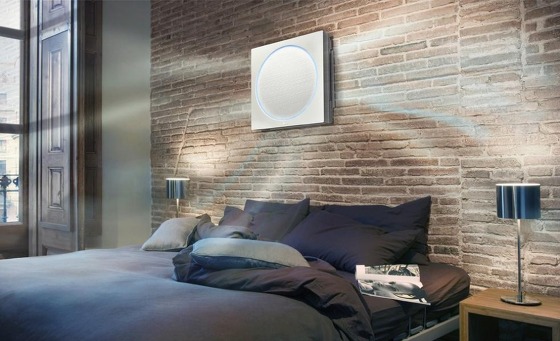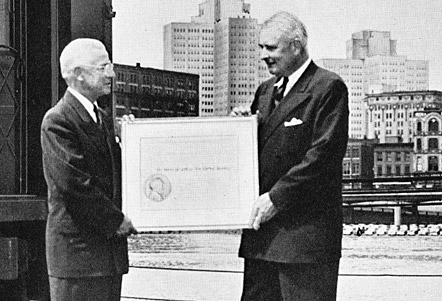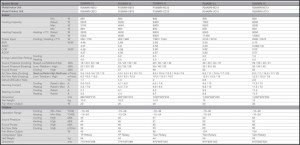Air Conditioning Melbourne. A Luxury or a Necessity?

LG Air conditioning Melbourne over master bed
So is Air Conditioning Melbourne an essential? Well in 1900 there was very little people could do during a hot spell except grumble about the weather or -if they could afford it -go away to the mountains or the seashore. Today air conditioning has changed this. With air conditioning you can be comfortable anywhere indoors on even the hottest, stickiest day of the year. You will almost certainly find air conditioning in the movie theaters you attend, in many of the stores where your family shops, and in the restaurants where you eat. It may even be in your own home.
What is Air Conditioning?
You know that air conditioning makes you feel cool. But air conditioning is more than just cooling. It means keeping the temperature and humidity (moisture content) of air in an enclosed space, whether it is one room or an entire building, at just the right level for the comfort of the people inside. It also means circulating the air and adding moisture if necessary. In summer it means removing by passing the air over cold pipes that collect water from the air, much as drops of water condense on a cold water glass on a hot, damp day. In fact, we might almost say that air conditioning Melbourne district means creating an artificial, comfortable climate. In this article we shall discuss only cooling.
In dry climates air can be cooled simply. The cooler may be no more than a large fan that draws hot, dry air to a water soaked fiber mat. The air is cooled as it evaporates the water. It is best utilized upon dry air to begin with, so that the added moisture will not cause discomfort. (This is not the case in humid climates)
Air conditioning Melbourne zone has many uses besides keeping us comfortable. Many industries depend on it to keep the air in their plants clean, cool and at the right moisture level. For example, textile fiber such as wool and cotton will stretch or shrink as the moisture content of air changes. This causes variations in the quality of the cloth. Too much moisture in the air – or even on a worker’s fingertips – will cause delicate metal parts such as rocket components or precision instruments instrument to corrode. The wrong temperature can spoil a batch of antibiotic culture. Proper air conditioning prevents this mishap.
The deep diamond and gold mines of South Africa use air conditioning to enable miners to work in what would otherwise be suffocating heat, thousands of feet below the ground. And then air conditioning is involved in every part of the United States space program, from making missiles to tracking them through the atmosphere.
Air Conditioning Historically

Air conditioning Melbourne History
Inventors have tinkered with methods of air conditioning for years. Ancient Egyptians and Romans got some relief from the heat by hanging woven mats soaked with water across to their entrances of their houses, so the air would be cooled by evaporation. In the 15th century A.D., a famous artist and inventor actually built a water powered fan.
As man’s interest in science grew so did the number of schemes for staying cool. There were hundreds of ideas, but none of them really worked. In fact, many of the schemes made people feel worse because they added large amounts of moisture to the air. Air is like a sponge. It will soak up water and make people feel sticky and uncomfortable, especially in hot weather. When the air is very moist, we say the humidity is high. When the air is dry, the humidity is low and we feel better.
The first machine that kept the humidity low or cooled the air at the same time was developed in 1902 by Willis H. Carrier who was often billed as “the father of air conditioning.” Carrier built this machine for a printing plant in Brooklyn, New York, that had trouble printing in color. Paper stretches when the air is damp and shrinks when the air is dry. Since each color had to be printed separately, the printing of different colors on the same sheet of paper did not line up accurately because the papers changed size between printings. Carrier’s machine kept the moisture level of the air constant by drawing the air over a row cold pipes that condensed excess moisture. This kept the paper at one size and also made the people in the plant feel cool. Carrier’s invention marked the begin of scientific air conditioning.
https://en.wikipedia.org/wiki/Carrier_Corporation
Air conditioning was soon being used in many factories, such as plants that made ammunition during World War I. But people generally did nit know about this invention until 1920’s, when hundreds of movie theaters, department stores, and restaurants had air conditioners installed. People often came into these places just to get relief from hot, muggy air outside.
As the air conditioning became more popular during the 1930’s, central air conditioning systems were developed. These could cool the whole office or apartment building from one centrally located unit, just as buildings were heated from one big furnace in the basement instead of by little stoves in each room. During the same period small units that could air condition a single room were developed. After World War II large numbers of small units began to be used in private homes. Then as a later development, used increasingly in public buildings and private homes, combining heating and cooling units in one system.
How does Air Conditioning Work?
An air conditioning unit does not “add coolness” to the air. It removes heat. An air conditioner works on the same basic principle as a refrigerator-though it is not designed to produce such low temperatures. Heat is taken from the air by the rapid expansion of a refrigerant (cooling substances) as it turns from a liquid at high pressure. An accompanying illustration shows the cycle of operations of a small home-type air conditioner. Here the air is cooled directly by the machine. For the sake of the simplicity, filter and motors are not shown in this diagram. In large, central installations, such as those in office buildings and schools, a machine chills water that is piped to a series of coils. Air from building is drawn over this coils and circulated through the building blowers.
To be practical, an air conditioning unit must be able to maintain a steady temperature. Otherwise people would have to turn their units off and on continually as the temperature become too cold or hot. A steady temperature-regulating device called thermostat. The thermostat is set at desired temperature. It then switches the cooling unit on and off as needed.
The air conditioning systems of the future may work by what is known as thermoelectric. A thermoelectric unit is very small and very quiet. It is made up of tiny “couples,” each couple consisting of a pair of semiconductors and connected in parallel current. These couples produce cooling at one end and heating at other when direct flows through them. This is called Peatier effect. When the current is reversed, the cooling and heating effects also reverse. When a way is found to produce this tiny thermoelectric unit cheaply, they may cool and heat your whole house.
In Parenthesis:

Air conditioning is a system that introduces cold air into a hot space to make it more comfortable. Air conditioning typically is used when temperatures are above 70 degrees F. It is used in cars, houses, offices, retail stores, restaurants, and other indoor facilities. Unlike heat, air conditioning is considered a luxury, and it is possible to go without it. Heat is considered to be a necessity and all homes must have it. When heat warnings exist, however, lack of air conditioning can present a problem for many elderly people who may live in older brick homes. Without air conditioning, these types of homes literally turn into an oven at a certain temperatures and can cause death.
Alternatives to air conditioning are fans, either electric or handheld, or open windows. Air conditioning Melbourne is used primarily in the summer when temperatures are higher. Therefore electric bills are usually higher in the summer months. Many electric companies offer budget billing, which balances out the high and low bills into a constant monthly payment. Budget billing is based on usage and may gradually increase over time as usage goes up.
There are two types of air conditioners Melbourne that are primarily used in homes. Window style units are placed in a window. Window air conditioning mainly cools the room that they are placed in. More expensive units may cool off more of the surrounding rooms. Window air conditioners run on electricity. They are placed in windows because the heat in the room is passed outside and swapped with the cold air coming in. Alternatives to window air conditioning units are wall air conditioners, which do not need to be placed in a window. Window units are more common in older homes.
New construction typically has central air conditioning built in. Central air conditioning runs the air throughout the entire house with the actual unit located outside. A thermostat controls the temperatures of the house. Older thermostats need to be changed manually to the desired temperature. Newer thermostats are programmable. Temperature settings can be programmed to change at certain times of the day. This can help lower electric bills by allowing the house to be warmer when the house is empty. Running domestic central air conditioning Melbourne suburbs uses a lot of electricity but it is generally more energy efficient than window air conditioning. Many older homes in Melbourne use either window units or have no air conditioning at all.

Air conditioning Melbourne split system models calculator

Recent Comments